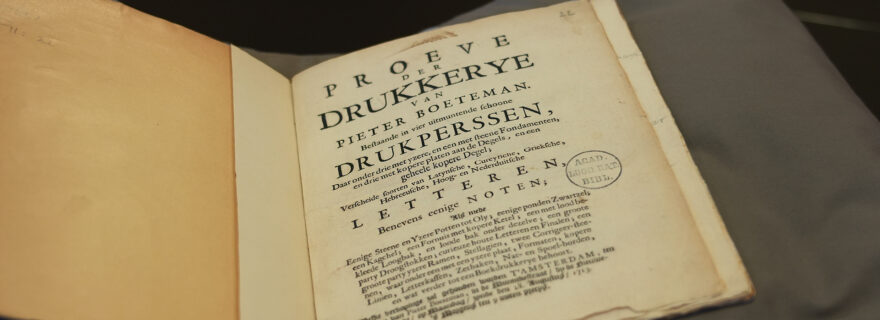Bad blood at an 18th-century printing type auction
Printers kept a close eye on each other in the 18th-century Dutch book industry. A stinging comment from printer Lobbedanus regarding one of his colleagues gives an intriguing insight into the trade of printing types.
On Saturday, the 28th of August, 1713, a dozen of Dutch book printers gathered in the former printing office of Pieter Boeteman (1685-1719) in the Monnikenstraat in Amsterdam. Earlier that year, Boetman had decided to shift his focus away from printing in favour of the paper trade. His four printing presses, an extensive assortment of printing types and various printing tools, were auctioned on that Saturday in August.
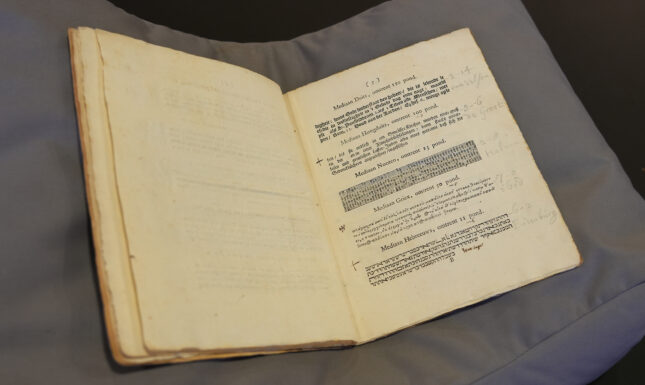

Auctions such as these were a perfect opportunity for printers to replenish and add to their stock for a reasonable price. This was certainly the case for types of less common languages, such as Greek, Hebrew and Arabic. These types were difficult to make and often cost a fortune when bought new. Usually, these materials were worn less than regular types, as in most cases a printer would only print brief quotes or passages with them. Secondhand type of this kind was therefore not only relatively cheap but also in a good condition, compared to second-hand roman, italic or blackletter type that was used more frequently in Dutch printing.
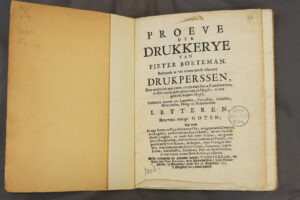

One of the prospective buyers at Boeteman’s auction was the Amsterdam printer and publisher Nicolaus Lobedanius or Lobbedanus (ca. 1682-1717). His copy of the auction catalogue for the sale of the Boeteman printing office has survived and is now kept at Leiden University Libraries (20651 F 11: 22). Lobbedanus, fortunately, annotated his copy of the catalogue extensively, which provides us with the opportunity to closely follow his actions in preparation for and during the auction.
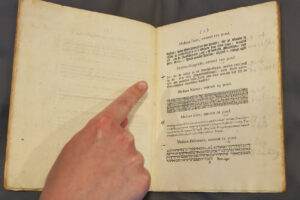

It is easily surmised from his notes that he did not go to the auction unprepared. Before the auction, Lobbedanus indicated which types he was interested in and how much he wanted to pay for them. Unfortunately, it turned out not to be the most successful auction for him. He had initially intended to buy twelve sets of type but managed to buy just one. This was not only because he was outbid by his colleagues. After subjecting the type to closer scrutiny, Lobbedanus deemed some of it to be unfit after all: he noted the following in the margins of his catalogue: 'niet goet’ (‘not good’) and ‘mankeert en meer’ (‘defective and more’).
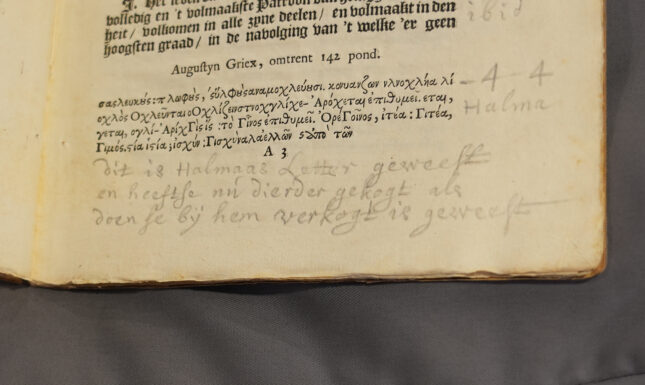

Lobbedanus’ most interesting (and quite vicious) note gives an intriguing insight into the trade in type material: ‘dit is Halmaas Letter geweest en heeft se nu dierder gekogt als doen se bij hem verkogt is geweest’ (‘This was Halma’s type and he has bought it now for more than he sold it for’). The type in question was 142 pounds of Augustijn Greek (the size Augustijn is approximately 12 points). It was bought by François Halma (1653-1722), who was the official printer of the University of Franeker and of the States of Friesland and had earlier worked as a printer in Utrecht and Amsterdam. We actually know little about the Dutch trade in type materials in the seventeenth and eighteenth centuries, but if Lobbedanus is right, his remark indicates that the trade of second-hand type was far more common than one might expect. Halma might have sold the type because he was in financial trouble and needed the cash. It may also be possible that he had needed the Greek type for a single project and sold it right after to recoup part of his investment.
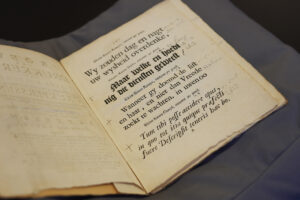

Whatever Halma’s motives were to sell his type at an earlier occasion, only to acquire it again at this auction; he made good use of the auction of Boeteman’s printing office to replenish his stock. He bought seventeen sets of type, among which nearly all of Boeteman’s Greek type, and in quite a few cases outbid Lobbedanus. Although the latter was less successful in buying the types he wanted, he did manage to make a nice acquisition at the end of the auction, buying two of Boeteman’s four printing presses for the reasonable sum of 171 guilders (approximately € 1900,-).
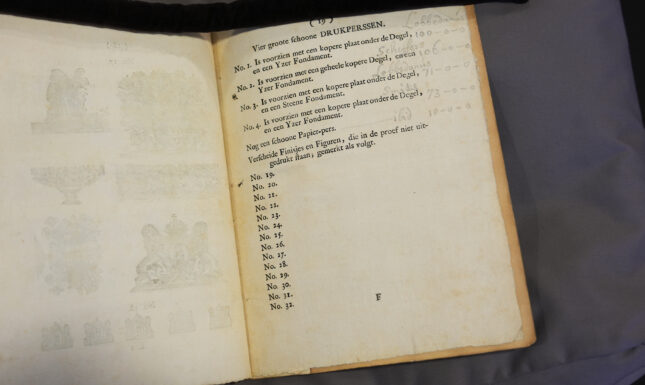

Online source
View Lobbedanus' auction catalogue in Digital Collections
About the author
Erik-Jan Dros is a historian with a special interest in book history and the history of Leiden University. He works as a project manager at Leiden University Libraries.


